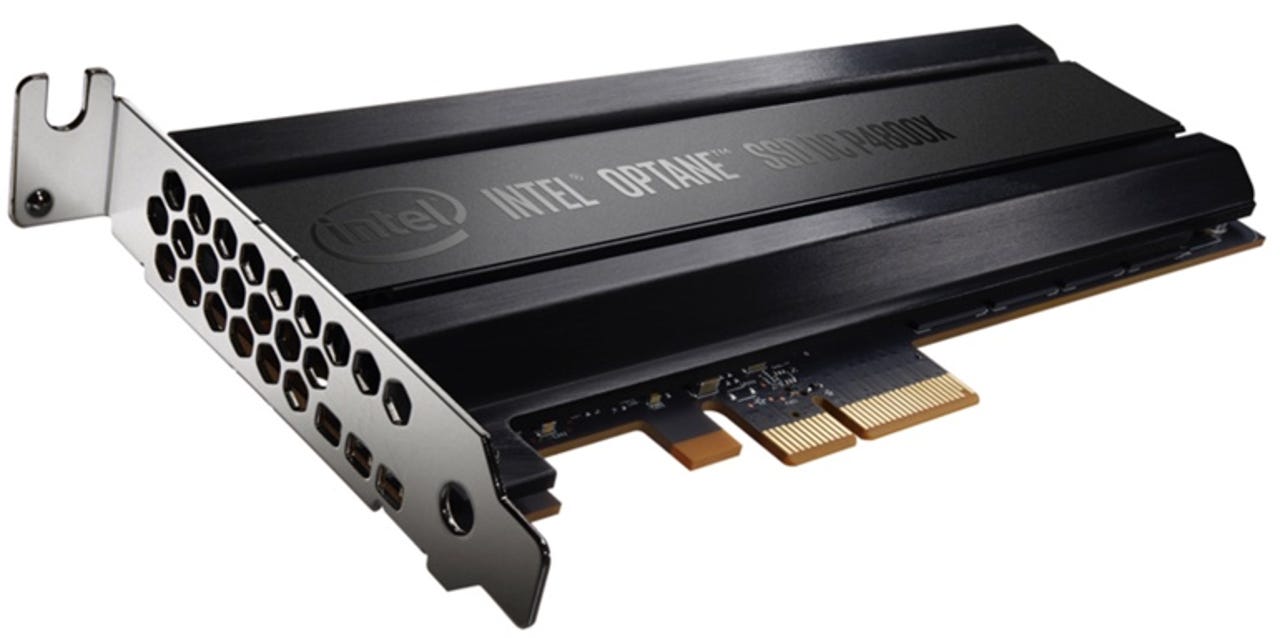Can Optane SSD DC P4800X allow Intel to keep its lead in the server storage market?


Intel Intel Optane SSD DC P4800X
According to DRAMeXchange, Intel was the top brand in the global server SSD market during 2016, holding a commanding 30 percent market share, a position it gained through the leveraging of its dominance in the processor market.
Featured
But all's not well as the likes of Samsung and Toshiba gain experience and make use of aggressive pricing to erode that market shares for mid-range and low-end server SSDs.
Can Optane SSD DC P4800X allow Intel to keep its lead in the server storage market? According to DRAMeXchange, the answer is yes.
Must read: Apple's desperate Mac damage control message hints at a divided company
"3D XPoint greatly outperforms NAND Flash and will help Intel reinforce its leading position in the high-end segment of the SSD market that has become increasingly competitive," said Alan Chen, senior research manager of DRAMeXchange, a division of TrendForce. "In the future, the product roadmap of 3D XPoint could include client-grade SSDs and storage-class memory (SCM) devices. Intel naturally wants to expand the adoption of this technology in other areas as to create flexibility in pricing and consumption of in-house production capacity."
"Intel lags behind Samsung and Toshiba in the production capacity for NAND Flash," added Chen. "Putting forward a new premium SSD line that uses a proprietary memory technology is a way for Intel to maintain high profit margin for its server business with limited NAND Flash capacity. Furthermore, the introduction of 3D XPoint will help Intel reduce the risk of being overly reliant on the high-end server SSD market."
The price per gigabyte of a 375GB SSD from the DC P4800X Series is about four times that of a NAND Flash-based SSD -- working out at approximately $4 per gigabyte -- with similar specifications and PCIe interface. However, compared to the average sales price of server DRAM DIMMs, which currently hovers around $7 per gigabyte, Optane is quite competitive
From a performance perspective, Optane SSDs can hit 2,400MB/s for sequential reading, and 2,200MB/s for sequential writing, or over 500,000 when measured in IOPS.
While being more expensive than NAND PCIe SSDs, SSDs using 3D XPoint offer several advantages. The random read and write speeds are faster and more consistent, latency is much lower, and overall endurance is much improved.
According to Chen, while 3D XPoint-based SSDs lack the performance capability to fully substitute server DRAM DIMMs, the DC P4800X Series can be used alongside server DRAM DIMMs to improve the operation of the entire server system.
Intel will follow up its 375GB storage product with future 750GB and 1.5TB versions.
Best Google Chrome extensions to enhance your security and productivity
See also:
- How to put an end to Wi-Fi frustrations
- Apple: 'We are completely rethinking the Mac Pro'
- Use your smartphone to fix car troubles and detect heart problems
- Get your iPhone or iPad ready for iOS 10.3
- Amazon could hammer the final nail into the iPad's coffin
Intel slows the rate of major chip upgrades as Moore's law falters: